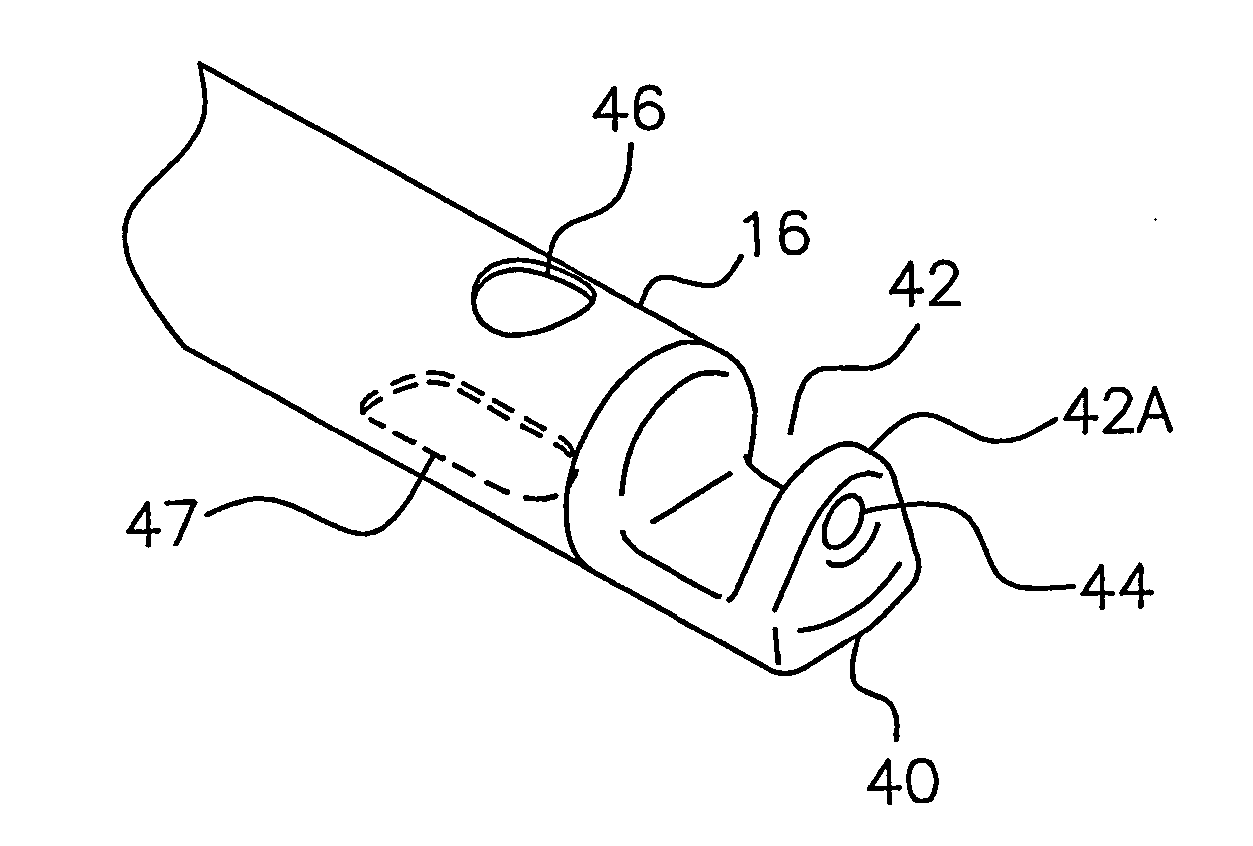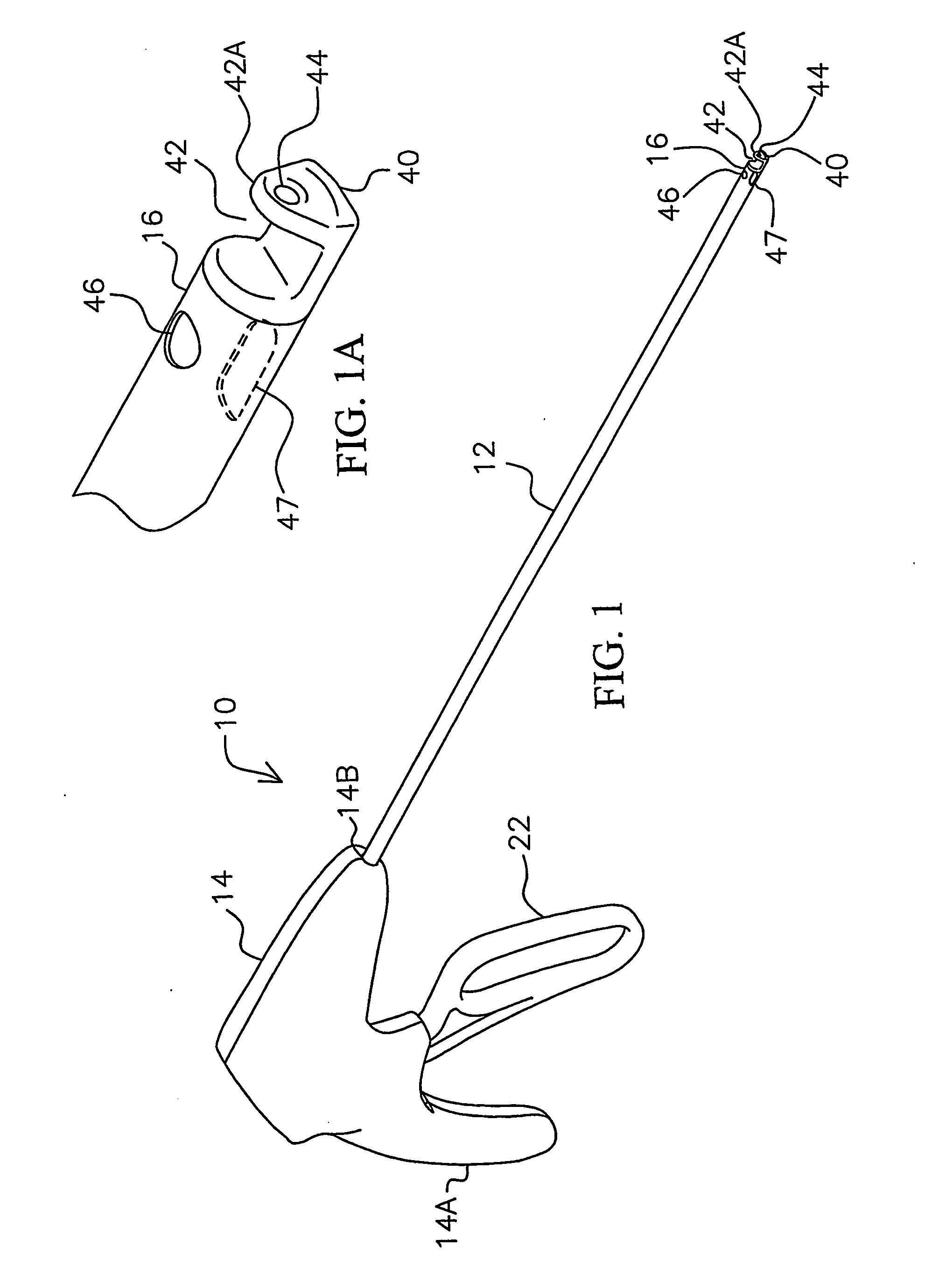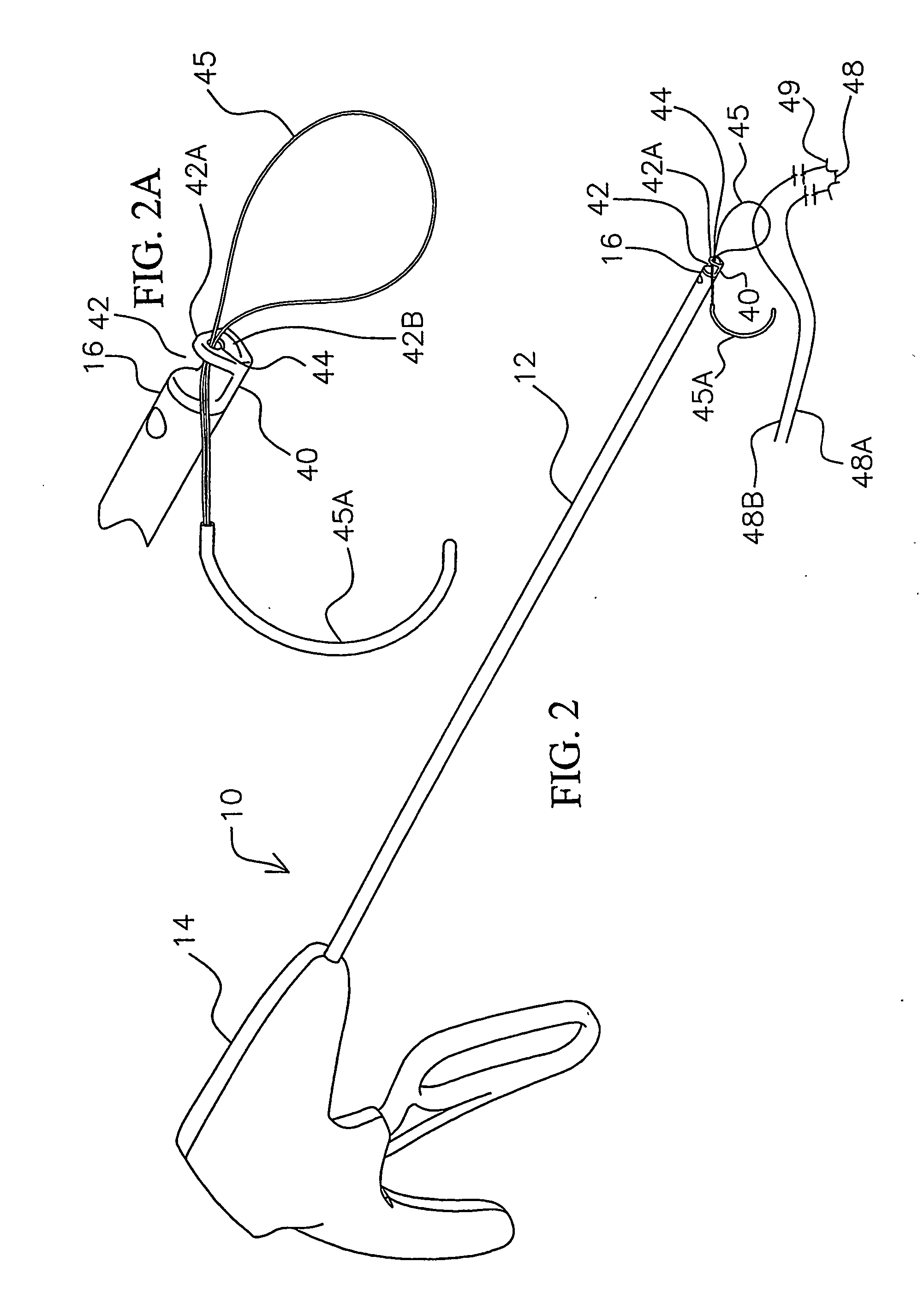Instrument for assisting in the remote placement of tied surgical knots and trimming of suture away from the knot and method of use
a technology for remote placement and surgical knots, applied in the field of instruments, methods and methods, can solve the problems of difficult suture passing, difficulty in forming and pushing, and difficulty in hand tying knots with conventional knot pushers, etc., and achieve the effect of facilitating the forming and pushing
- Summary
- Abstract
- Description
- Claims
- Application Information
AI Technical Summary
Benefits of technology
Problems solved by technology
Method used
Image
Examples
Embodiment Construction
[0067] Referring to FIGS. 1, 1A, and 5-14, the instrument 10 of the present invention is shown having a shaft 12 extending from a housing 14 to a distal end 16. The housing is shaped like a pistol having a handle portion 14A, and may be made of a two-piece construction of molded plastic. Shaft 12 extends from opening 14B of the housing to distal end 16. The shaft 12 is provided by a rigid tube 18 (FIGS. 5 and 6) which at its D-shaped end 18A (FIG. 6) is registered into a corresponding shaped opening in an adapter 20, and a threaded nut 23 having an opening which extends over mounting tube 18 and screws onto the threaded end 21 of the adapter 20. The adapter 20 is mounted by flanges 20A in housing 12. A washer 31, such as of stainless steel, may be provided over tube 18 after nut 31 in housing 14. For example, tube 18 may be stainless steel and have an outer diameter of 5 mm. Shaft 12 may be rigid or flexible along all or part of its length to the distal end 16.
[0068] The instrument...
PUM
| Property | Measurement | Unit |
|---|---|---|
| Electric charge | aaaaa | aaaaa |
| Current | aaaaa | aaaaa |
| Current | aaaaa | aaaaa |
Abstract
Description
Claims
Application Information
 Login to View More
Login to View More - R&D
- Intellectual Property
- Life Sciences
- Materials
- Tech Scout
- Unparalleled Data Quality
- Higher Quality Content
- 60% Fewer Hallucinations
Browse by: Latest US Patents, China's latest patents, Technical Efficacy Thesaurus, Application Domain, Technology Topic, Popular Technical Reports.
© 2025 PatSnap. All rights reserved.Legal|Privacy policy|Modern Slavery Act Transparency Statement|Sitemap|About US| Contact US: help@patsnap.com



